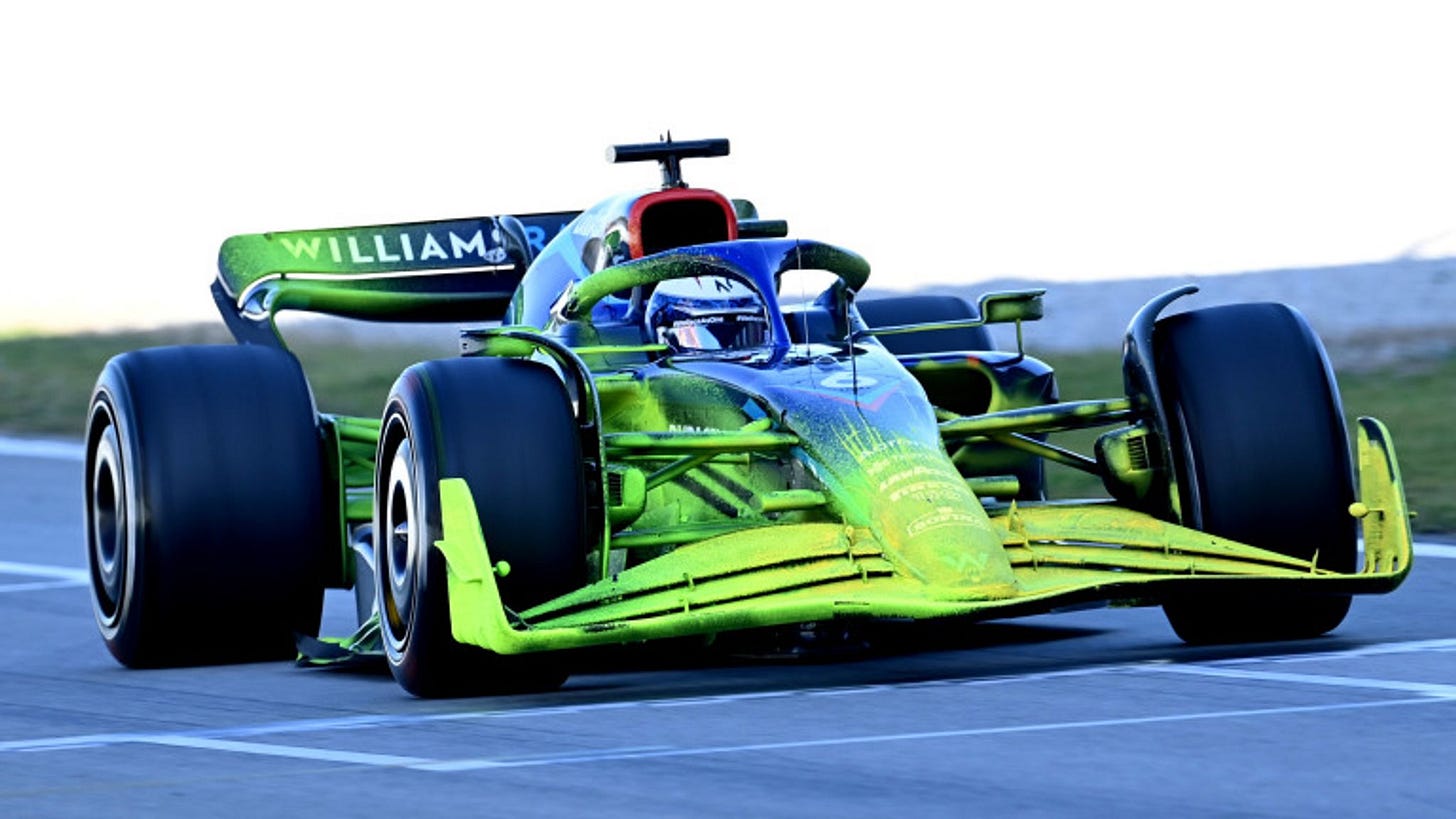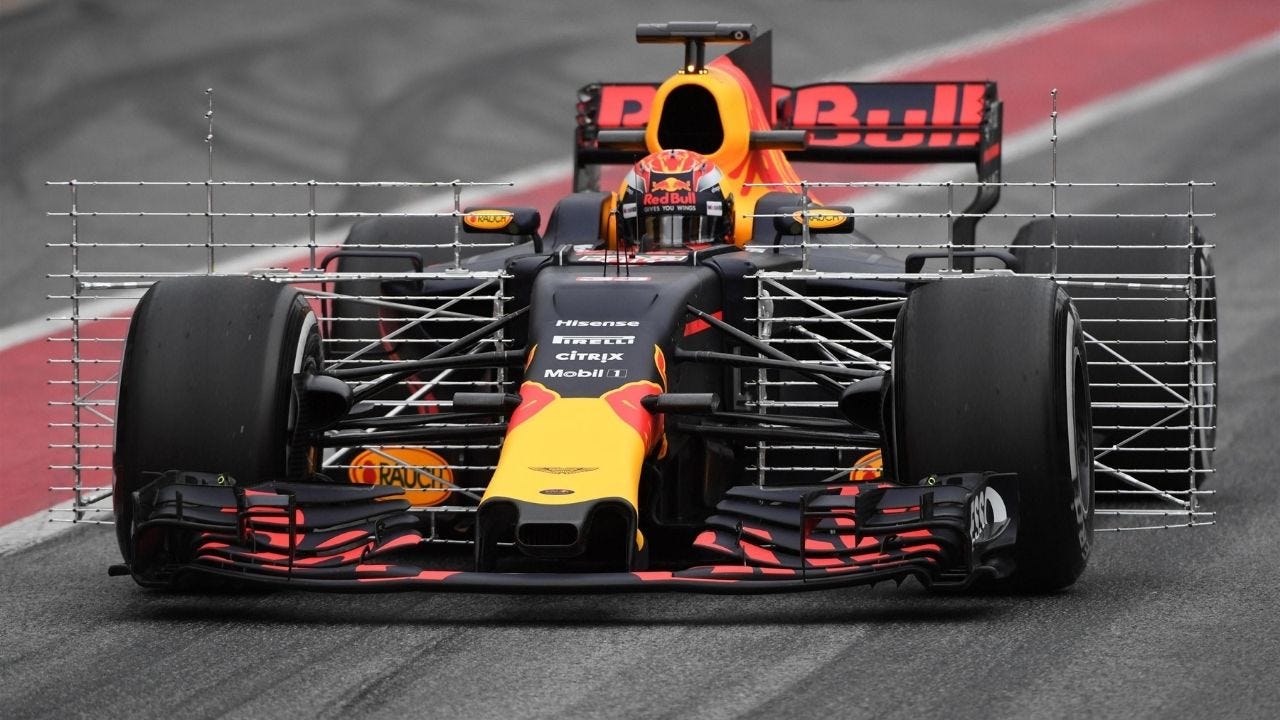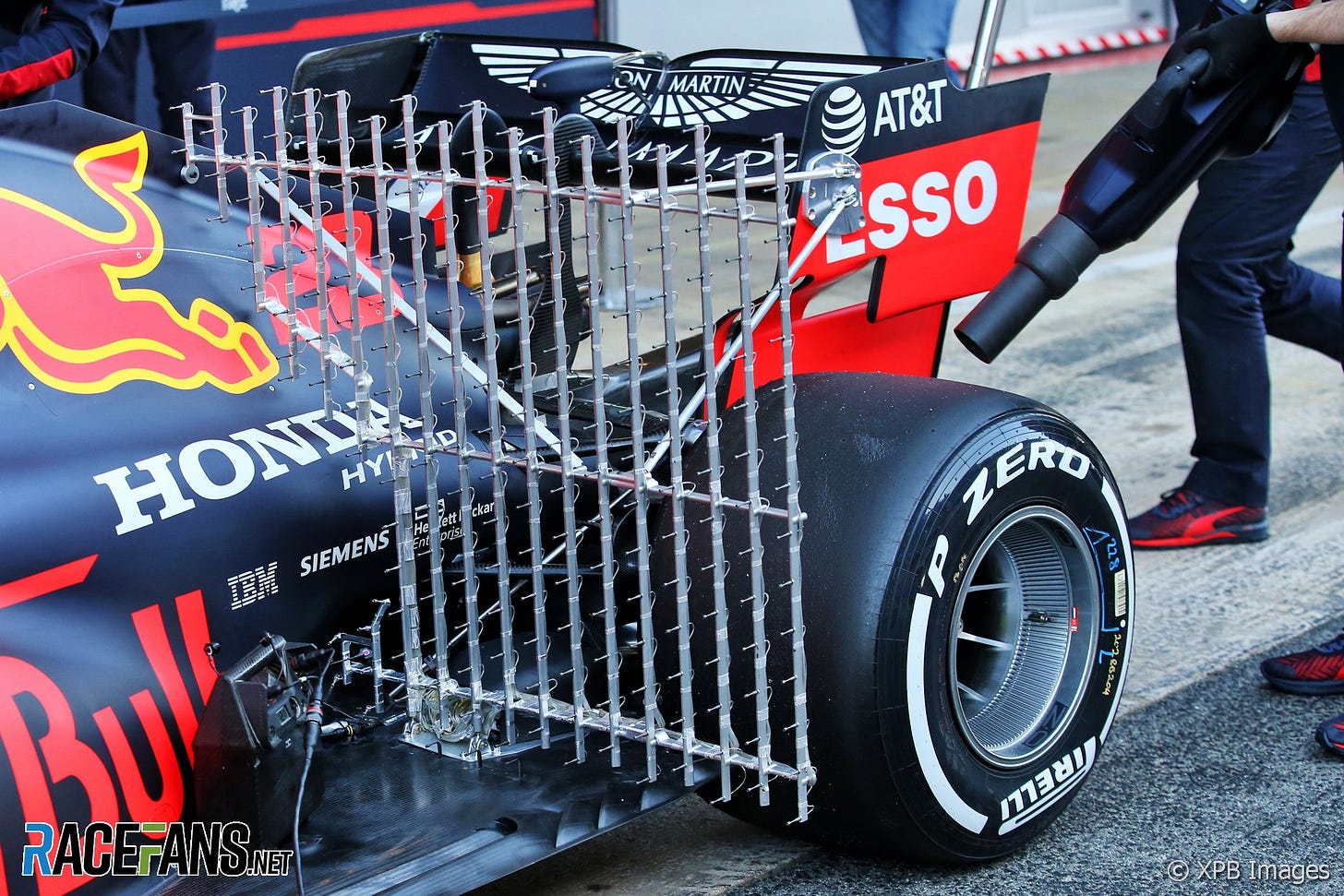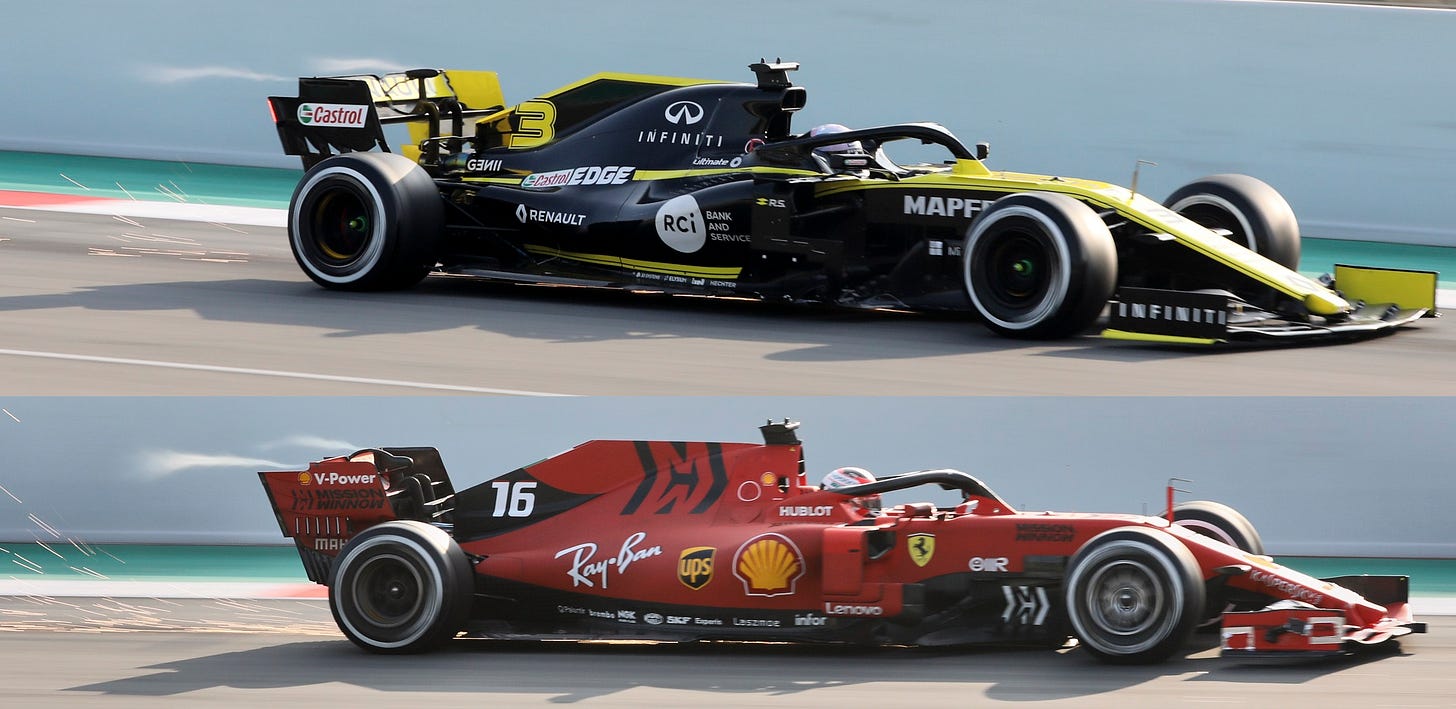F1 Pre-season Testing
Flo-vis and Aero rakes
Formula 1 engineers are always trying to improve the team’s car since even shaving a tenth of a second can make a difference between places. This is why before every race season, there is a weekend of pre-season testing.
Aero paint
The performance of the car in the wind tunnel often differs slightly from its performance on the track due to physical aspects like road texture, weather changes and dirty air caused by cars ahead. This is why cars have to be tested on the track before the racing season starts. A tool that many teams utilize on track is aero paint or flo-vis. Made of oil (usually paraffin), flo-vis is applied to the car in areas like the front wing and undercuts. As the car speeds up and goes through the corners, the paint dries and the oil evaporates so the engineers can observe air movement.
When air sticks to the car, it forms a boundary layer so that the car can cut smoothly through the course. Flo-vis allows aerodynamicists to flag areas where the air separates from the car. Separation in airflow can cause an increase in drag which is damaging to race times. After track testing, teams usually cover the car before it gets back to the pit so that rival teams don’t try to steal their data.
Aero rakes
You may have seen these scaffolding-like sheets of metal that get applied to the cars during pre-season testing. These are called aero rakes. Aero rakes are a series of pitot tubes that help measure velocity and airflow structures around the car.
Pitot tubes are a relatively old technology; they were invented by Henry Pitot in the 18th century to measure the velocity of a river. These tubes were then modified and used to measure velocity of aircraft and other moving bodies.
Pitot tubes utilize pressure and the Bernoulli equation (relating velocity to pressure and density) to find velocity. There is a main opening in the tube that leads to a chamber where total pressure can be measured. There are also two tubes that open perpendicular to this main opening that lead to a chamber that measures static pressure. With both total and static pressures, you can then find the average velocity of the air passing through the tubes also known as volumetric flow.
These tubes are also equipped with other sensors that can measure humidity and air temperature so the team engineers can get a full idea of what the air flow is like around the car.
They can also use pitot tubes to determine if the front or back wing is not generating enough downforce or falling over by observing wingtip vortices. Wingtip vortices are created because there is a high pressure area above the wing and a low pressure area below. The high pressure air moves to the lower pressure area at the wingtips to balance it out; this pressure shift combined with the high velocity of the car forms a vortex.
Well before the excitement of the actual race, F1 teams are busy perfecting their cars. With the data gathered from aero paint and rakes, aerodynamicists and pit engineers can alter the cars accordingly so that they are optimized for racing season. While we mainly focus on the drivers throughout the season, we couldn’t have Formula 1 races without the pit crew and engineers.
Sources
https://www.formula1.com/en/latest/article.smedley-what-are-aero-rakes.1F74d3YVUBzRRiZz9D3nZ4.html
https://www.grc.nasa.gov/www/k-12/VirtualAero/BottleRocket/airplane/pitot.html
https://www.sciencedirect.com/science/article/abs/pii/S0019057898000366
https://howthingsfly.si.edu/aerodynamics/vortex-drag









Great explanations! Thanks.